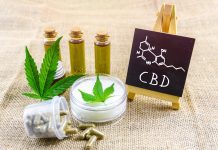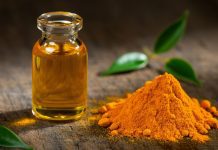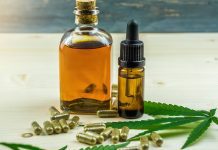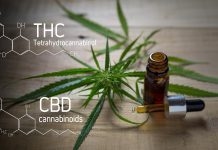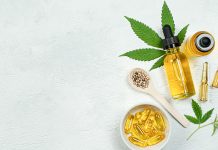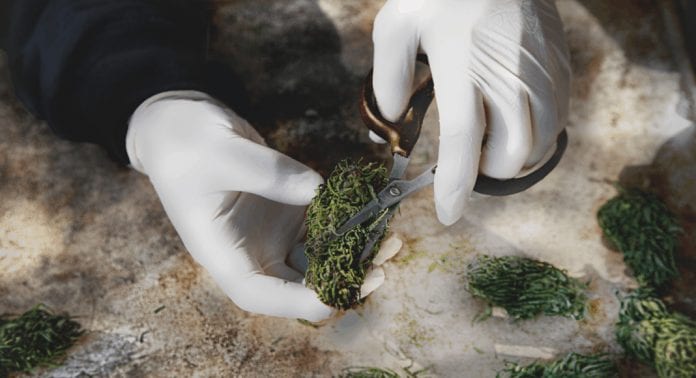
Wholly Hemp INC/Cannabidiol Life Brands, showcases the history and future of phytocannabinoid research in the USA and worldwide.
In this article Jessica Arent, Chief Compliance Officer at Wholly Hemp, explains more.
The incredible platform the United States provided farmers in 2014 when the Farm Bill was signed into federal law opened doors into new frontiers no one imagined possible. Every five years, United States Congress passes a bundle of legislation, commonly called the ‘Farm Bill’, which sets national agriculture, nutrition, conservation and forestry policy.
The Agriculture Act of 2014 passed the Senate with an overwhelming bipartisan majority of 68 to 32 on 4 February 2014; and on 7 February 2014, President Obama signed the 2013 Farm Bill into law. Section 7606 of the Act, ‘Legitimacy of Industrial Hemp Research’, defines industrial hemp as distinct from marijuana; and authorises institutions of higher education or the State Department of Agriculture in states which have legalised hemp cultivation to regulate and conduct research and pilot programmes.
Industrial hemp refers to the genetically distinct non-psychotropic, low-THC varieties of the cannabis sativa L. plant; hemp has absolutely no use as a recreational drug. Section 7606 of the Farm Bill defines industrial hemp as ‘the plant cannabis sativa L. and any part of such plant, whether growing or not, with a delta-9 tetrahydrocannabinol concentration of not more than 0.3% on a dry weight basis’.
The industry grows
The floodgates opened; and those who had the capital, tenacity and the dreams – farmers and innovators alike – aligned to come up with creative solutions in business concepts, from seed to finished product of hemp extracts. The phytocannabinoid industry was born, and so a new chapter in the history of the United States began.
In the early years the few active industry players were largely concentrated in the heart of the Colorado Rocky Mountains. Before long, products featuring concentrated potencies of cannabidiol were being introduced to the public: the cause was primarily driven by parents of children with neurological conditions that caused hundreds of seizures a day, seeking natural, side effect-free solutions they had read about in an Israeli study.
Soon, patients like Charlotte Figi became household names, as they became the centre of media attention in highlighting the life changing results produced by CBD extracts. Charlotte was the first child recognised in the US who received medicinal CBD to control her condition, which, when untreated, saw her suffer hundreds of seizures a day. It wasn’t long before more parents of children with debilitating and often life-threatening conditions made great sacrifices to move across the country to access the medicine which they believed would save their child’s life. A movement was born.
Tinctures and oral syringes delivered the extracts at the time of need with seemingly near-immediate results; and patients who it was assumed would grow or function like ordinary children began to thrive. CBD became the hottest alternative medical commodity in history; and the world opened to an idea of natural options which could potentially change how we see medicine on a global scale.
By 2016 media coverage increased and celebrities begin to open up about their experiences. One by one, the states began to see the economic and social return of a lighter regulatory hand. In the year that followed, the United States saw its industrial hemp revolution double in size.
In 2016 just over 11,000 acres of hemp were grown in the US, in comparison to the nearly 78,000 acres of the 2019 season. These acres, by and large, are dedicated to the extraction and fabrication of finished products covering everything from edibles to topicals, from hygiene to beauty; and can be found in such innovative products as neoprene gloves, body suits, pillows and mattresses, to name a few. The industry is booming and there is no stopping it now: in 2020, it is ‘full steam ahead’.
Regulation and standards
While this is all well intended – and in some cases, very innovative – what continues to plague the industry is the varying regulatory standards and processes on both the federal and state levels. In some cases, it appears the states take a high level federal approach to cannabis regulation, while other states appear to prefer a closer micromanagement approach. At present, the phytocannabinoid market seems to lie somewhere between pharmaceuticals and liquor licensing.
With the birth of the ‘smokeable hemp’ model of 2019, the question of potency as it applies to the level of THC opens an entirely new argument of legality and new extraction techniques. The products, bred for high potency cannabinoids, and low THC, invariably test ‘hot’ by federal standards. In some cases, this means a strain is too hot to move in the market without an issue of violation of law.
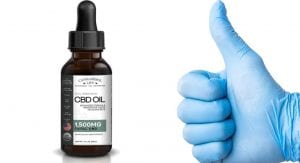
Moreover, with breeding and genetics now on a fast track to producing bespoke strains to meet specific demands and higher phytocannabinoid potencies, extraction is becoming more lucrative; as the higher the genetic standard, the less raw material is needed, yielding more concentrated oils for less investment. With these genetics, however, came complications in regulated breeding; as the plant material was now consistently well over the legal limitations of THC content.
This now implies that any transaction over state lines constitutes drug trafficking; and while extraction mediation is in very high demand for this purpose, the reality is that very few producers hold the necessary licence to process the hemp material which exceeds the federal THC allowance of 0.3% percent of dry weight. Those who take on the task without the proper allowances and permits to do so risk federal prosecution.
Acreage upon acreage has been grown, though whether it has been adequately purposed is another story: the value per percentage of genetic potency has dropped with the influx of farmers and the incredible speed with which the national market has grown. Just 56 months ago the price of isolate averaged $45,000 per kilo; today, that same kilo has a price tag of $900 for the singular ‘D’ molecule. One year ago today, we averaged $4.50 per percentage point of genetic potency of CBD, from double that the year before: today we play at $0.80 per percentage point.
Federal regulation and the development of an industry-wide standard is now a focal point of the industry. Today, the market is full of unregulated product, with unverified sourcing from the seed to the extract in many cases; and a market known for corruption, with many key players finding themselves at the centre of high profile federal investigations, class action law suits and in some cases in receipt of warning letters from the Food and Drug Administration (FDA). We therefore find ourselves at the pivotal crossroads of much needed standards for operation that creates a federal platform of safe operatives from the seed to the sale to protect those with operatives in the industry, and most importantly to protect the consumer.
Investigation and research
As of February 2020, the FDA has made a formal request of $5m to investigate CBD further. It is recognised by the Commissioner of Food and Drugs Stephen Hahn that these products are not going to go anywhere. One in five US adults have tried CBD related products; and policymakers are now recognising that the American public is demanding alternatives and there is no stopping the burgeoning industry.
Within each state, however, laws are being passed and enforced specific to the products: this will help us better understand where federal regulation will go with it, when the time comes. In states such as Florida, for example, task force agents assigned by the State Department of Agriculture are now taking up the burden of identifying the brands in the market, the entities selling them and enforcing a standard of permitting and licensing regulations which makes each and every moving piece of the product, from the seed to the sale, an accountable player in the development of the product going to the consumer. The end goal of the programme, which is in its second month and appears to have been a great success, is to distinguish the safe and professional practitioners from those who are not and to begin to clean up the market, creating a solid, traceable model from seed to supply.
Taking into consideration the possibility that the release of a bad batch or may put the consumer at risk, the department proactively considers the ramifications and challenges to get ahead of the curve, thereby setting the example to follow similar to the regulation of any other perishable plant-based commodity.
There is much work to be done in the year ahead, as we are still only in the early stages of the industry. Science in many cases has yet to catch up to the market. Some innovations, from the invention of the extraction machines themselves to the process by which we formulate the end products such as beverages, are well ahead of their time; and testing for potency has not yet been mastered. In the case of the beverage market and the understanding that the plant extract is hydrophobic, emulsifying the molecules to blend is proving efficient yet undetectable. There is not yet a method to identify with accuracy the volumes of the total potencies against the liquids, as the emulsifiers inhibit accurate readings – this is one of many challenges we are now beginning to uncover.
To date the world has uncovered the beneficial properties of the phytocannabinoid, and hundreds of studies are underway; from Israel, the birthplace of it all, to the United States.
Scientists have identified over 80 cannabinoids while studying the compounds found in cannabis sativa L. Tetrahydrocannabinol (THC) and cannabidiol (CBD) are the most well known, as they are produced in the highest concentrations relative to dozens of other cannabinoids in the plant – 12% to 21% and 1% to 10% respectively – and because they have been studied the most. In 2019, however, new research in Italy shifted the focus to the benefits offered by the more minor cannabinoids.
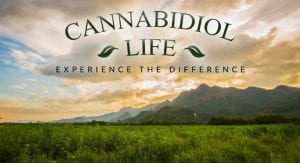
Beyond THC and CBD
The ‘A’ in THCA and CBDA represents the carboxylated, or acidic, form of the compound. These ‘acidic’ versions of THC or CBD are naturally occurring compounds in the cannabis plant. It is only through drying and/or heating that they can be decarboxylated into their non-acidic forms (CBD, THC): this is the reason ‘raw’ cannabis products are usually heated through smoking, cooking or other methods before they are consumed. Although the acidic version of the cannabinoids may be bioactive, they are not psychotropic. THCA can only be psychotropic once it has been decarboxylated into THC.
CBGA is the chemical compound in cannabis that naturally transforms into THCA, CBDA and CBCA. It is the precursor to the other cannabinoids and is found at higher concentrations in young plants. As the plants and their flowers mature, CBGA converts to the compounds which are commonly sought after. CBG itself is not psychotropic, but it is the parent to THC which is psychotropic. CBGA by standard has a concentration of less than 1% in mature cannabis, but it can now be more easily isolated through the crossbreeding, selection and development of strains containing high CBG levels. CBG isolates and products are now gaining attention for their bioactive effects; and many studies have begun to explore this cannabinoid to determine how it functions in the body.
CBN is the new hot topic in the world of phytocannabinoids. It occurs as a result of THC oxidation: when THC is exposed to light or heat, stored incorrectly or degraded in some way, the molecule converts to CBN. It may be slightly psychotropic, but the research is inconclusive, and it is certainly nowhere near as potent as THC.
CBG, CBC and CBN are only a few of many cannabinoids beyond the popularly known THC and CBD. Acidic analogues such as CBDA and THCA are now the subject of ongoing studies in Italy. Tetrahydrocannabivarin (THCV) and cannabidivarin (CBDV) are additional cannabinoids with very similar structures to THC and CBD, but which do not produce exactly the same effects. All of this represents groundbreaking discoveries in a newly discovered plant science, with a long way to go before we really understand what is truly possible.
Wholly Hemp looks to the future
As we forge ahead in our collective aspirations to change the way we see and use natural medicinal resources, it is becoming increasingly clear that the world now sees alternatives to prescribed synthetic products. When we attempt to unravel 80 years of humanity’s destruction, in the form of our carbon and plastic footprint, we return to a simpler idea in that the provisions of earth – in plants, minerals, air and water – should be enough to supplement our existence; and our societies and governments have a new responsibility to empower man to return to nature’s root for our own evolution and sustainability.
Jessica Arent
Chief Compliance Officer
Wholly Hemp Inc
+1 713 254 3810
jessicaarent@cannabidiollife.com
cbdoilsandedibles.com
This article appeared in the second issue of Medical Cannabis Network which is out now. Click here to get your free subscription today.



